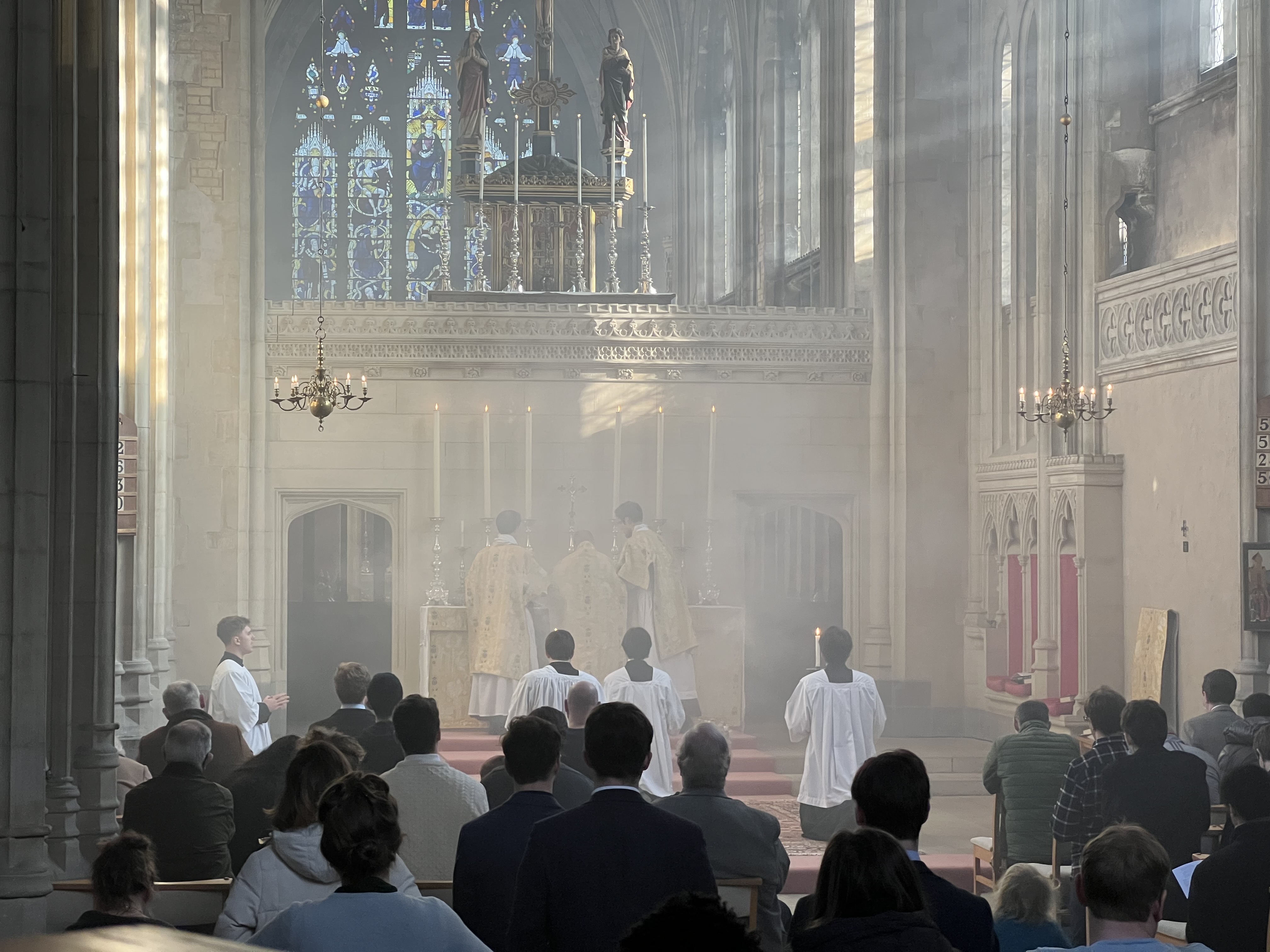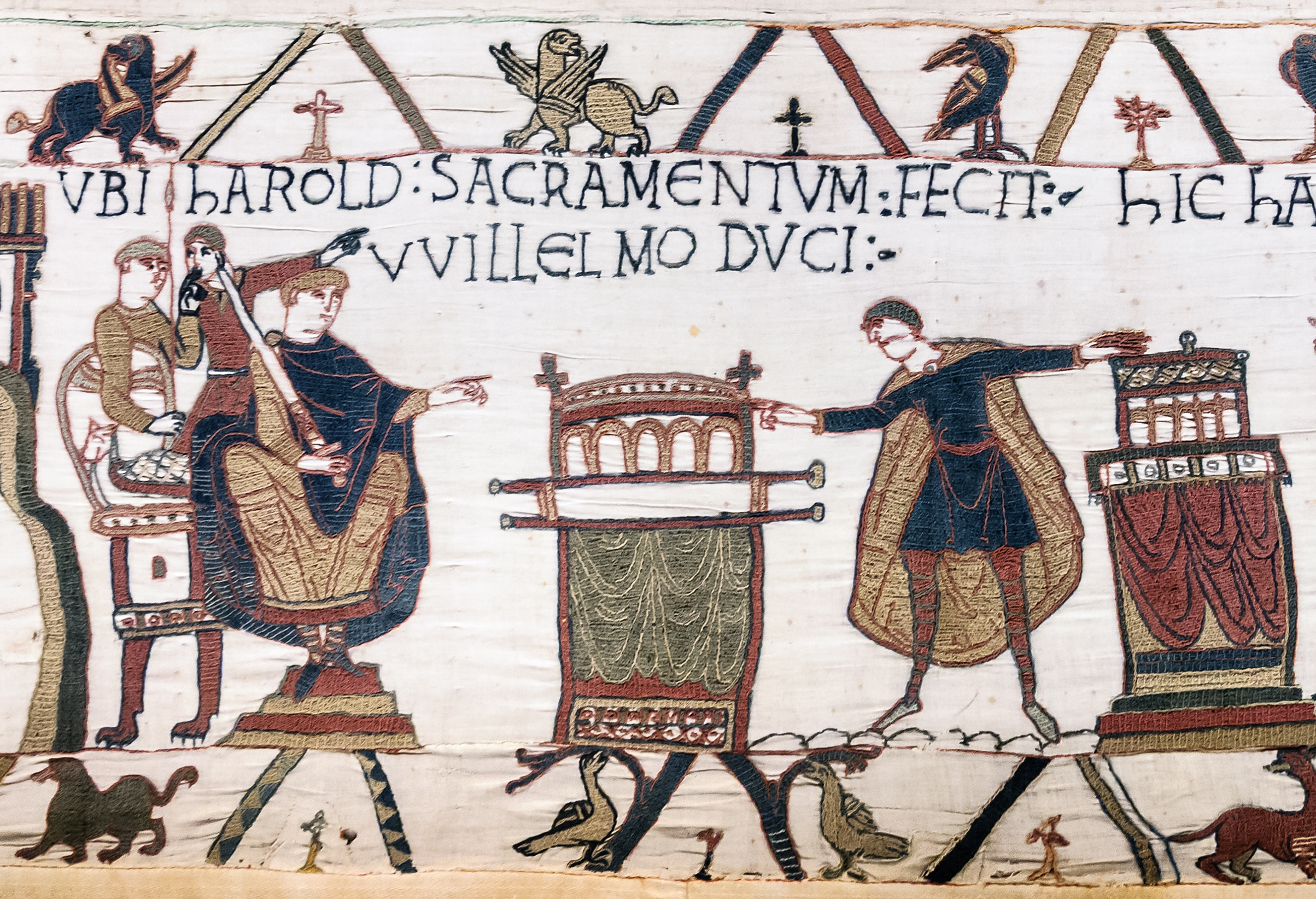|
St Olave's Church, Exeter
St Olave's Church is a small church which was founded in 1053 by Lady Gytha, the mother of King Harold. The church is dedicated to Saint Olaf, a Viking Vikings were seafaring people originally from Scandinavia (present-day Denmark, Norway, and Sweden), who from the late 8th to the late 11th centuries raided, pirated, traded, and settled throughout parts of Europe.Roesdahl, pp. 9� ... king who converted to Christianity. It was rebuilt in the late 14th century. References Further reading *Orme, Nicholas (2014) ''The Churches of Medieval Exeter'', Impress Books, ISBN 9781907605512; pp. 150-53. External links St. Olave's Church Churches in Exeter Church of England church buildings in Devon 1053 establishments in England Rebuilt churches in the United Kingdom 14th-century church buildings in England Grade II* listed churches in Devon Churches dedicated to Saint Olav in the United Kingdom {{England-church-stub ... [...More Info...] [...Related Items...] OR: [Wikipedia] [Google] [Baidu] |
Exeter
Exeter ( ) is a City status in the United Kingdom, cathedral city and the county town of Devon in South West England. It is situated on the River Exe, approximately northeast of Plymouth and southwest of Bristol. In Roman Britain, Exeter was established as the base of Legio II Augusta under the personal command of Vespasian. Exeter became a religious centre in the Middle Ages. Exeter Cathedral, founded in the mid 11th century, became Anglicanism, Anglican in the 16th-century English Reformation. Exeter became an affluent centre for the wool trade, although by the First World War the city was in decline. After the Second World War, much of the city centre was rebuilt and is now a centre for education, business and tourism in Devon and Cornwall. It is home to two of the constituent campuses of the University of Exeter: Streatham Campus, Streatham and St Luke's Campus, St Luke's. The administrative area of Exeter has the status of a non-metropolitan district under the administ ... [...More Info...] [...Related Items...] OR: [Wikipedia] [Google] [Baidu] |
England
England is a Countries of the United Kingdom, country that is part of the United Kingdom. It is located on the island of Great Britain, of which it covers about 62%, and List of islands of England, more than 100 smaller adjacent islands. It shares Anglo-Scottish border, a land border with Scotland to the north and England–Wales border, another land border with Wales to the west, and is otherwise surrounded by the North Sea to the east, the English Channel to the south, the Celtic Sea to the south-west, and the Irish Sea to the west. Continental Europe lies to the south-east, and Ireland to the west. At the 2021 United Kingdom census, 2021 census, the population was 56,490,048. London is both List of urban areas in the United Kingdom, the largest city and the Capital city, capital. The area now called England was first inhabited by modern humans during the Upper Paleolithic. It takes its name from the Angles (tribe), Angles, a Germanic peoples, Germanic tribe who settled du ... [...More Info...] [...Related Items...] OR: [Wikipedia] [Google] [Baidu] |
Church Of England
The Church of England (C of E) is the State religion#State churches, established List of Christian denominations, Christian church in England and the Crown Dependencies. It is the mother church of the Anglicanism, Anglican Christian tradition, tradition, with foundational doctrines being contained in the ''Thirty-nine Articles'' and ''The Books of Homilies''. The Church traces its history to the Christian hierarchy recorded as existing in the Roman Britain, Roman province of Britain by the 3rd century and to the 6th-century Gregorian mission to Kingdom of Kent, Kent led by Augustine of Canterbury. Its members are called ''Anglicans''. In 1534, the Church of England renounced the authority of the Papacy under the direction of Henry VIII, beginning the English Reformation. The guiding theologian that shaped Anglican doctrine was the Reformer Thomas Cranmer, who developed the Church of England's liturgical text, the ''Book of Common Prayer''. Papal authority was Second Statute of ... [...More Info...] [...Related Items...] OR: [Wikipedia] [Google] [Baidu] |
Gytha Thorkelsdóttir
Gytha Thorkelsdóttir ( 997 – c. 1069), also called Githa, was a Danish noblewoman. She was the wife of Godwin, Earl of Wessex, and the mother of King Harold Godwinson and Edith of Wessex, the latter of whom was the queen consort of King Edward the Confessor. Biography Gytha Thorkelsdóttir was the daughter of Danish chieftain Thorgil Sprakling (also called Thorkel). Gytha was also the sister of the Danish Earl Ulf Thorgilsson who was married to Estrid Svendsdatter, the sister of King Cnut the Great. She married the Anglo-Saxon nobleman Godwin of Wessex. They had a large family, and one of their sons, Harold, became king of England. Two of their sons, Harold and Tostig, faced each other at the Battle of Stamford Bridge, where Tostig was killed. Less than a month later, three of her sons: Harold, Gyrth, and Leofwine, were killed by William the Conqueror's invading Norman army at the Battle of Hastings. She pleaded with William for the return of the body of her slain son, ... [...More Info...] [...Related Items...] OR: [Wikipedia] [Google] [Baidu] |
Saint Olaf
Saint Olaf ( – 29 July 1030), also called Olaf the Holy, Olaf II, Olaf Haraldsson, and Olaf the Stout or "Large", was King of Norway from 1015 to 1028. Son of Harald Grenske, a petty king in Vestfold, Norway, he was posthumously given the title '' Rex Perpetuus Norvegiae'' () and canonised at Nidaros (Trondheim) by Bishop Grimketel, one year after his death in the Battle of Stiklestad on 29 July 1030. His remains were enshrined in Nidaros Cathedral, built over his burial site. His sainthood encouraged the widespread adoption of Christianity by Scandinavia's Vikings/Norsemen. Pope Alexander III confirmed Olaf's local canonisation in 1164, making him a recognised saint of the Catholic Church, and Olaf started to be known as ''Rex Perpetuus Norvegiae'' – ''eternal king of Norway''. Following the Reformation, he was a commemorated historical figure among some members of the Lutheran and Anglican Communions. The saga of Olav Haraldsson and the legend of Olaf the Saint becam ... [...More Info...] [...Related Items...] OR: [Wikipedia] [Google] [Baidu] |
Diocese Of Exeter
The Diocese of Exeter is a Church of England diocese covering the county of Devon. It is one of the largest dioceses in England. The Cathedral Church of St Peter in Exeter is the seat of the diocesan Bishop of Exeter. It is part of the Province of Canterbury. The diocesan bishop ( Mike Harrison) is assisted by two suffragan bishops, the Bishop of Crediton and the Bishop of Plymouth. The See of Crediton was created in 1897 and the See of Plymouth in 1923. History The Diocese of Crediton was created out of the Diocese of Sherborne in AD 909 to cover the area of Devon and Cornwall. Crediton was chosen as the site for its cathedral, possibly due it having been the birthplace of Saint Boniface and also the existence of a monastery there.Exeter: Ecclesiastical History . Retrieved 5 June 2008 ... [...More Info...] [...Related Items...] OR: [Wikipedia] [Google] [Baidu] |
Province Of Canterbury
The Province of Canterbury, or less formally the Southern Province, is one of two ecclesiastical provinces which constitute the Church of England. The other is the Province of York (which consists of 12 dioceses). Overview The Province consists of 30 dioceses, covering roughly two-thirds of England, parts of Wales, all of the Channel Islands and continental Europe, Morocco, Turkey, Mongolia and the territory of the former Soviet Union (under the jurisdiction of the Diocese of Gibraltar in Europe). The Province previously also covered all of Wales but lost most of its jurisdiction in 1920, when the then four dioceses of the Church in Wales were disestablished and separated from Canterbury to form a distinct ecclesiastical province of the Anglican Communion. The Province of Canterbury retained jurisdiction over eighteen areas of Wales that were defined as part of "border parishes", parishes whose ecclesiastical boundaries straddled the temporal boundary between England and ... [...More Info...] [...Related Items...] OR: [Wikipedia] [Google] [Baidu] |
Anglo-Catholicism
Anglo-Catholicism comprises beliefs and practices that emphasise the Catholicism, Catholic heritage (especially pre-English Reformation, Reformation roots) and identity of the Church of England and various churches within Anglicanism. Anglo-Catholicism claims to restore Christian liturgy, liturgical and Anglo-Catholic devotions, devotional expressions of church life that reflect the ancient practices of the early and medieval church. The term was coined in the early 19th century, although movements emphasising the Catholic nature of Anglicanism already existed. Particularly influential in the history of Anglo-Catholicism were the Caroline Divines of the 17th century, the Jacobitism, Jacobite Nonjuring schism of the 17th and 18th centuries, and the Oxford Movement, which began at the University of Oxford in 1833 and ushered in a period of Anglican history known as the "Catholic Revival". History The historic Anglican formularies, developed under the influence of Thomas Cranme ... [...More Info...] [...Related Items...] OR: [Wikipedia] [Google] [Baidu] |
Harold Godwinson
Harold Godwinson ( – 14 October 1066), also called Harold II, was the last crowned Anglo-Saxon King of England. Harold reigned from 6 January 1066 until his death at the Battle of Hastings on 14 October 1066, the decisive battle of the Norman Conquest. He was succeeded by William the Conqueror, the victor at Hastings. Harold Godwinson was a member of the most powerful noble family in England, his father Godwin having been made Earl of Wessex by Cnut the Great. Harold, who served previously as Earl of East Anglia, was appointed to his father's earldom on Godwin's death. After his brother-in-law, King Edward the Confessor, died without an heir on 5 January 1066, the ''Witenagemot'' convened and chose Harold to succeed him; he was probably the first English monarch to be crowned in Westminster Abbey. In late September, he defeated an invasion by rival claimant Harald Hardrada of Norway in the Battle of Stamford Bridge near York before marching his army back south to meet Willi ... [...More Info...] [...Related Items...] OR: [Wikipedia] [Google] [Baidu] |
Viking
Vikings were seafaring people originally from Scandinavia (present-day Denmark, Norway, and Sweden), who from the late 8th to the late 11th centuries raided, pirated, traded, and settled throughout parts of Europe.Roesdahl, pp. 9–22. They also voyaged as far as the Mediterranean Sea, Mediterranean, North Africa, the Middle East, Greenland, and Vinland (present-day Newfoundland in Canada, North America). In their countries of origin, and some of the countries they raided and settled in, this period is popularly known as the Viking Age, and the term "Viking" also commonly includes the inhabitants of the Scandinavian homelands as a whole. The Vikings had a profound impact on the Early Middle Ages, early medieval history of Northern Europe, northern and Eastern Europe, including the political and social development of England (and the English language) and parts of France, and established the embryo of Russia in Kievan Rus'. Expert sailors and navigators of their cha ... [...More Info...] [...Related Items...] OR: [Wikipedia] [Google] [Baidu] |
Churches In Exeter
Church may refer to: Religion * Church (building), a place/building for Christian religious activities and praying * Church (congregation), a local congregation of a Christian denomination * Church service, a formalized period of Christian communal worship * Christian denomination, a Christian organization with distinct doctrine and practice * Christian Church, either the collective body of all Christian believers, or early Christianity Places United Kingdom * Church, a former electoral ward of Kensington and Chelsea London Borough Council that existed from 1964 to 2002 * Church (Liverpool ward), a Liverpool City Council ward * Church (Reading ward), a Reading Borough Council ward * Church (Sefton ward), a Metropolitan Borough of Sefton ward * Church, Lancashire, England United States * Church, Iowa, an unincorporated community * Church Lake, a lake in Minnesota * Church, Michigan, ghost town Arts, entertainment, and media * '' Church magazine'', a pastoral theology mag ... [...More Info...] [...Related Items...] OR: [Wikipedia] [Google] [Baidu] |






